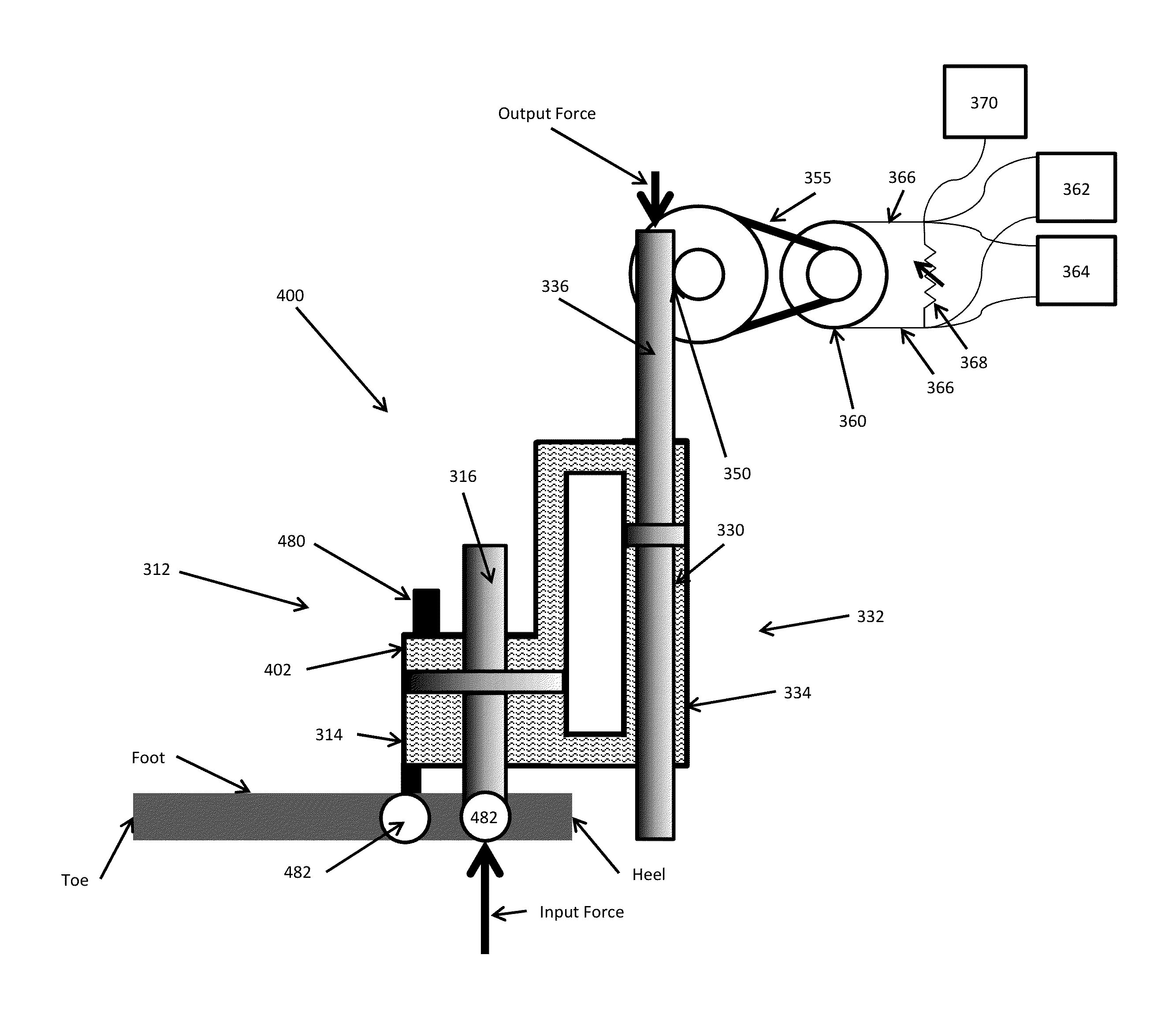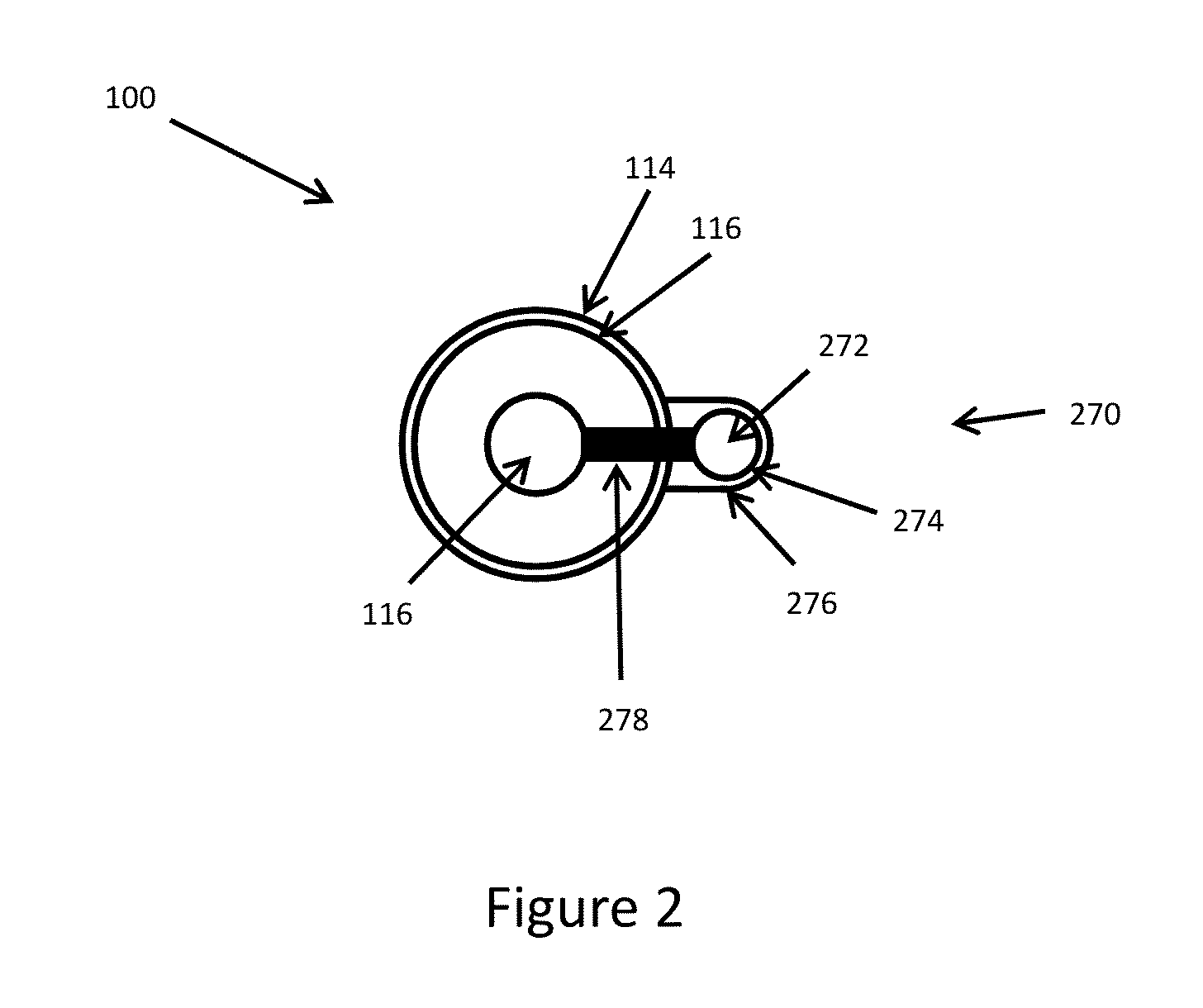Apparatuses and methods for harvesting energy from prosthetic limbs
a technology for prosthetic limbs and apparatuses, applied in the direction of prosthesis, electric generator control, machines/engines, etc., can solve the problems of limiting the amount of mechanical movement available to move an electromechanical generator as a means, limiting the amount of battery power to the user, and limiting the amount of mechanical force on some components in such a devi
- Summary
- Abstract
- Description
- Claims
- Application Information
AI Technical Summary
Benefits of technology
Problems solved by technology
Method used
Image
Examples
Embodiment Construction
[0016]Reference will now be made in detail to specific embodiments or features, examples of which are illustrated in the accompanying drawings. Generally, corresponding or similar reference numbers will be used, when possible, throughout the drawings to refer to the same or corresponding parts.
[0017]Referring now to FIG. 1, an exemplary embodiment of an apparatus 100 for harvesting energy from motion of a prosthetic limb is illustrated. As would be appreciated by persons skilled in the art, the prosthetic limb has motion in at least one degree of freedom. In the embodiment illustrated, the apparatus 100 includes a hydraulic amplifier 110 and a mechanical arrangement 150 configured to couple output motion and associated output force of the hydraulic amplifier 110 to a generator 160.
[0018]According to various aspects, the hydraulic amplifier 110 includes an input member 112 and an output member 132. The input member 112 may include a first hydraulic cylinder 114 and a first piston 116...
PUM
 Login to View More
Login to View More Abstract
Description
Claims
Application Information
 Login to View More
Login to View More - R&D
- Intellectual Property
- Life Sciences
- Materials
- Tech Scout
- Unparalleled Data Quality
- Higher Quality Content
- 60% Fewer Hallucinations
Browse by: Latest US Patents, China's latest patents, Technical Efficacy Thesaurus, Application Domain, Technology Topic, Popular Technical Reports.
© 2025 PatSnap. All rights reserved.Legal|Privacy policy|Modern Slavery Act Transparency Statement|Sitemap|About US| Contact US: help@patsnap.com



